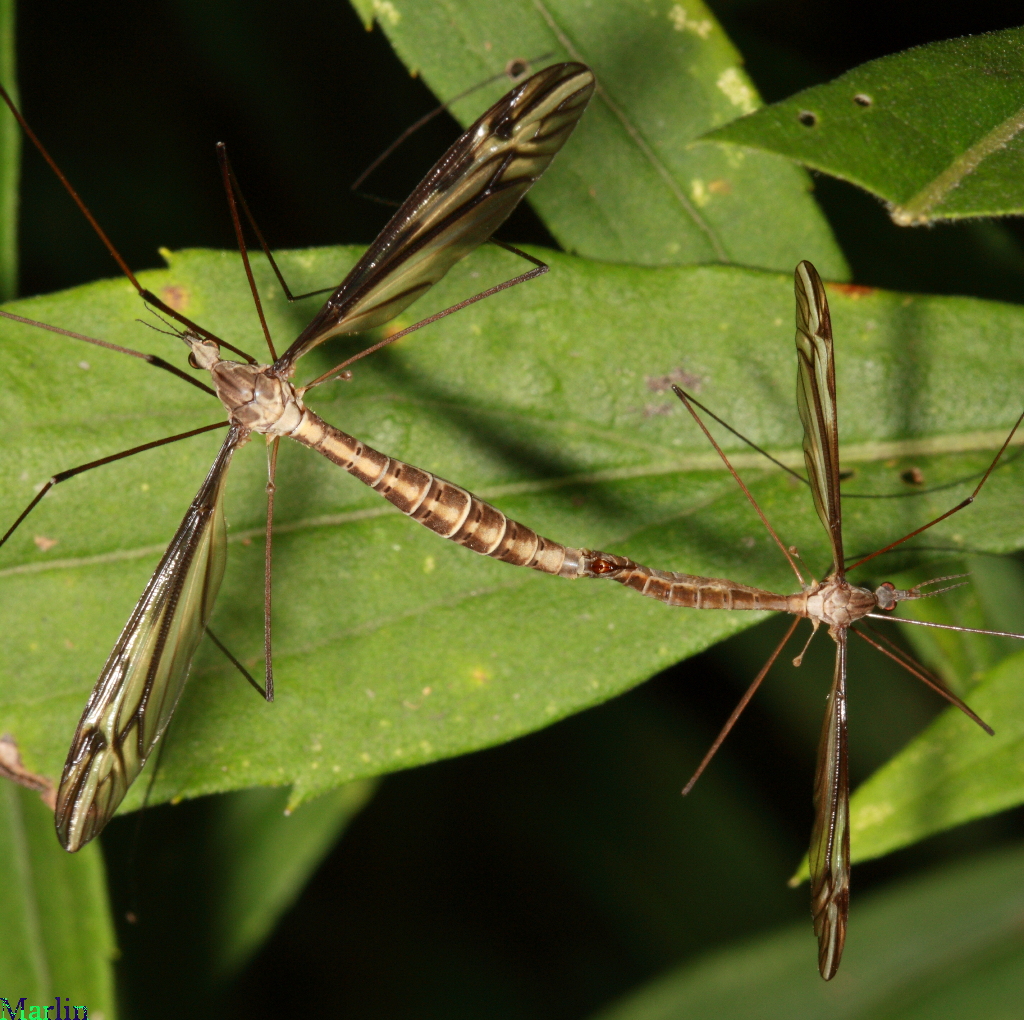 |
Crane Fly – Tipula furca Family Tipulidae is the largest family of Diptera with about 1,500 species in North America and 12,000 species worldwide. |
Flies Main | Flies Index | Tachinidae | Syrphidae | Bee Flies | Blow Flies | Flesh Flies
| Although adult crane flies are usually sluggish fliers, it's very difficult to see them in flight due to their slim build; there are species that use a very slow wingbeat to propell their body forward and backward, almost as if the body is moving instead of the wings; at the same time the creature flings its hideously long legs to-and-fro inrythm to the whole pulsation – and thereby become all but invisible. Sort of like the vibrating spider. If you ever see one doing it, you'll know what I mean. It's quite a sight!
They are are often abundant in moist woodlands and around water, usually near places where their larval life is spent. They occur mainly in spring and fall, but species of wingless, snow crane flies (Chionea) appear in the winter. Adult crane flies are most active in the cooler part of the day, usually around dusk. Adult males are more abundant at the beginning of the flight period while females are more numerous toward the end. Although individual adults have a relatively short life span of 10 to 15 days, the flight period for each species can last from 25-30 days. The main functions of the adult stage are mating and egg-laying. Feeding is less important, and probably water is the most pressing need. Species with elongated rostrum (Geranomyia, Elephantomyia, Toxorhina) have been reported visiting flowers, probably for nectars. Crane flies serve several important roles in the ecosystem. Most importantly, adult and larval crane flies are food for many animals such as birds, fish, frogs, lizards, spiders and other insects. In addition, the larvae are detritus feeders that break down organic matter in various habitats such as streams and forest floors thereby enriching the soil, renewing and modifying the microhabitat for other invertebrate species. Some crane flies require special habitat conditions, and their presence or absence can be used as an indicator of environmental quality. Fishermen use larvae of some large crane flies as bait. Several species of crane flies are important agricultural pests; their larvae feed on seedlings of field crops and if abundant can be destructive to lawns, rangelands, rice fields, and golf courses. |
| In North America, more than 1,500 species of crane flies have been described and over 300 species are known from Pennsylvania. This number probably represents only about two-thirds of the estimated actual number for the state, and much more precise taxonomic studies are needed.
Crane flies serve several important roles in the ecosystem. Most importantly, adult and larval crane flies are food for many animals such as birds, fish, frogs, lizards, spiders and other insects. In addition, the larvae are detritus feeders that break down organic matter in various habitats such as streams and forest floors thereby enriching the soil, renewing and modifying the microhabitat for other invertebrate species. Some crane flies require special habitat conditions, and their presence or absence can be used as an indicator of environmental quality. Fishermen use larvae of some large crane flies as bait. Several species of crane flies are important agricultural pests; their larvae feed on seedlings of field crops and if abundant can be destructive to lawns, rangelands, rice fields, and golf courses. References
|

References
|
|
Flies of North America – Order Diptera. Flies are prevalent in virtually all habitats, with over 16,000 species in North America. Flies can be distinguished from all other insects in that they only have one pair of normal wings. Most flies have compound eyes and mouthparts adapted for piercing, lapping or sucking fluids. Insects & Spiders | Flies Index | Syrphidae | Bee Flies | Robber Flies
|
